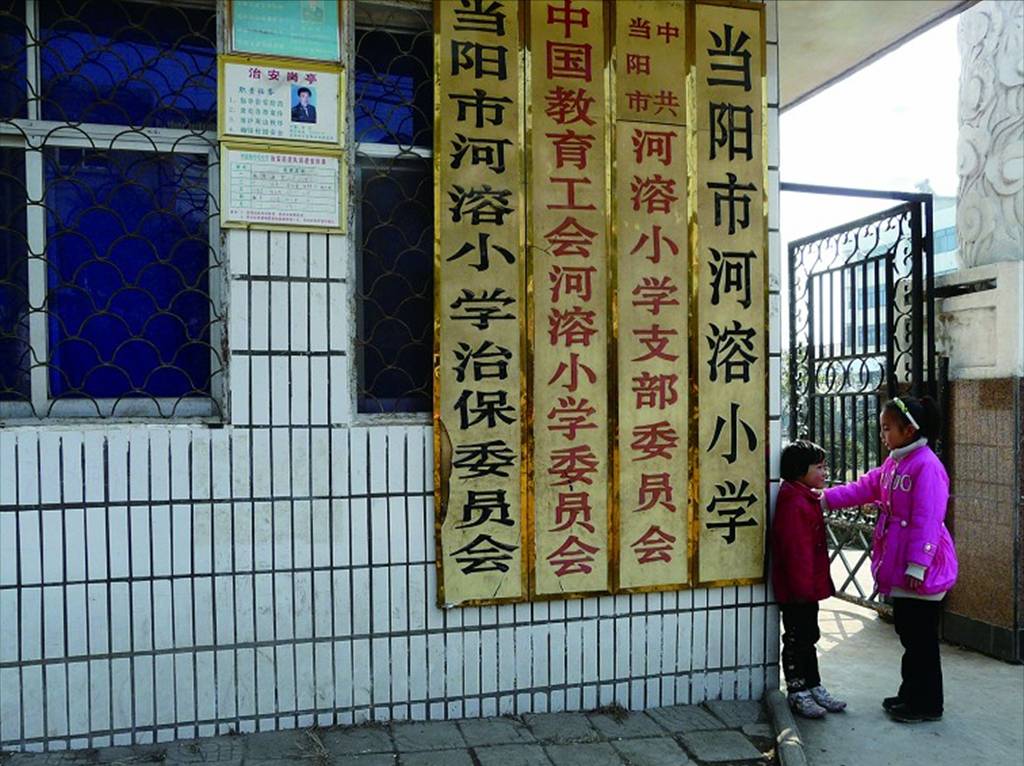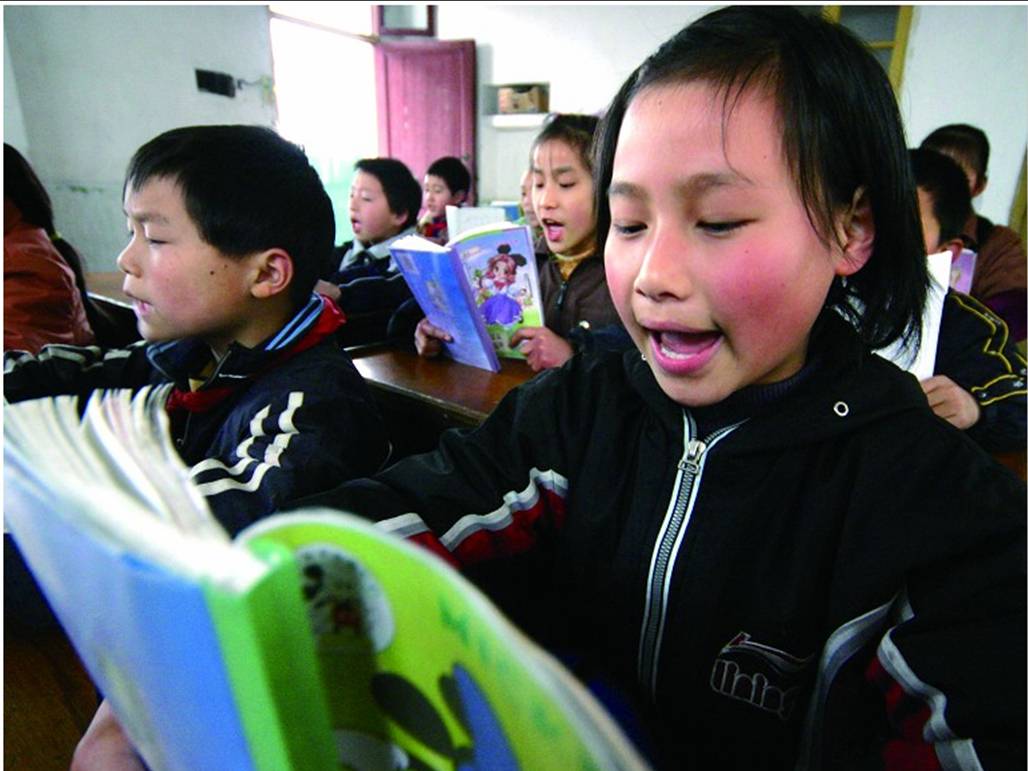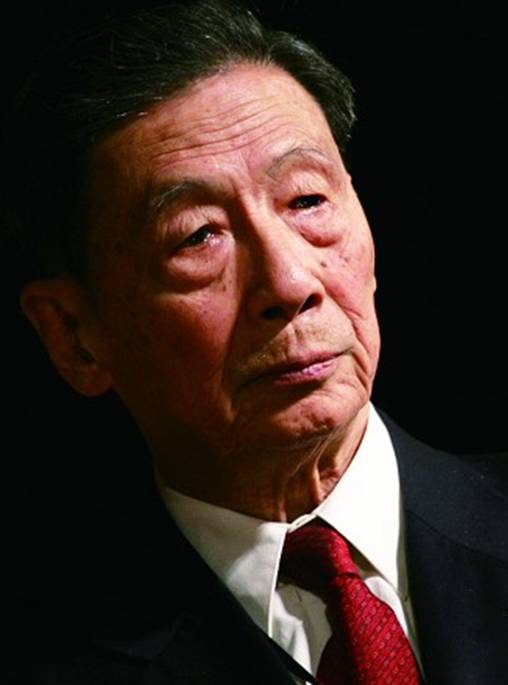
From Special, pages 9-12, issue no. 357 Mar 3 2008
Original articles: [Chinese]
The Chinese government's oft-stated goal of constructing a "harmonious society" has given way to increasing focus on five core issues, or the "five haves", closely tied to the livlihoods of Chinese--that is, universal access to education, employment, housing, social security and healthcare. In the 17th Congress of the Chinese Communist Party, these new focus areas were enshrined by President Hu Jintao's Party report, and are expected to be widely discussed and pursued during the top legislative sessions thereafter.
The two sessions (lianghui or 两会 in Chinese) refer to meetings of the Eleventh National People's Congress (NPC) and the Chinese People's Political Consultative Conference (CPPCC) from March 3 to 18.
In view of this, the EO published a five-part special focusing on each of the "five haves", including case studies and interviews. In this first part, we cover China's education system.
Case Study 1: Mounting Debt in Compulsory Education
 When the Chinese government implemented its nine-year compulsory education system, which called for six years of elementary and three years of junior high, policy in 1986, it led to a frenzy of school building and renovating in rural areas to meet the enlarged enrolment. By the 1990s, these construction activities – many based on agreements between contractors and school management that payment would be made after completion – had chalked up huge debts. In Dangyang alone, a city in central China's Hubei province, debt had reached up to 30.1 million yuan by 2003.
When the Chinese government implemented its nine-year compulsory education system, which called for six years of elementary and three years of junior high, policy in 1986, it led to a frenzy of school building and renovating in rural areas to meet the enlarged enrolment. By the 1990s, these construction activities – many based on agreements between contractors and school management that payment would be made after completion – had chalked up huge debts. In Dangyang alone, a city in central China's Hubei province, debt had reached up to 30.1 million yuan by 2003.
Over 90 headmasters in Dangyang were brought to the court by creditors, who held the headmasters responsible as the the legal representives of the newly built schools. Many headmasters went into hiding, and reemerged only after the government stepped in. The debts were redirected to the local government's treasury and education department, to be paid by installments starting in 2003 until they were completely paid off by August this year.
To prevent history from repeating itself, Dangyang local government has set a limit on the spending of public school construction. Any investment for building, renovating or upgrading beyond 1,000 yuan for primary, 10,000 yuan for junior high, and 50,000 yuan for senior high schools, requires prior approval from the local government.
Case Study 2: Sunset over Private Education in Suqian
 Private schools flourished in Suqian, the poorest area in Jiangsu province in the mid-1990s, after the resource-strapped local government decided to bring in private capital to save its faltering education system around 2000. Incentives like tax waivers and discounted land purchases encouraged the flow of private funding to set up kindergarten, primary, junior, and senior high schools.
Private schools flourished in Suqian, the poorest area in Jiangsu province in the mid-1990s, after the resource-strapped local government decided to bring in private capital to save its faltering education system around 2000. Incentives like tax waivers and discounted land purchases encouraged the flow of private funding to set up kindergarten, primary, junior, and senior high schools.
Initially, private schools won over teachers and students from the public schools with their newer facilities, better salaries and attractive advertisements. Increased number of private schools with better standards provided the local government the breathing room to revamp its public education. The government managed to save enormously with private players sharing these costs; and the savings were spent on buying new equipment and hiring better qualified teachers in these public schools. Soon, they were on par with the private ones. The hybrid public-private education model had brought enrolment rate for the nine-year compulsory education in Suqian to nearly 100% and enhanced students' performance at national level examinations.
Owing to government's subsidies and a subsequent policy of waiving school fees and other miscellaneous charges, the public schools rebounded and became the preferred choice among students and teachers. On the other hand, the private education sector became too saturated, and coupled with rising competition from the public institutions, many private schools drowned in debt, bankruptcy, and closure.
Update: Education at the NPC and CPPCC
Chinese Premier Wen Jiabao, in his address presented on March 6, disclosed that China would realize free compulsory education covering both urban and rural areas by autumn this year. Previously, the waiver of tuition and miscellaneous school fees were mostly enjoyed by rural schools. (For further reading: Xinhua – Highlights of Wen's Government Work Report)
Interview: Mao Yushi – The Economics of Education
 Mao Yushi is a renowned Chinese economist specializing in micro-economy. He has several book titles under his belt, including The Economics of Daily Life, and The Future of Morals in China. The latter was nominated for the US Anthony Fisher Award.
Mao Yushi is a renowned Chinese economist specializing in micro-economy. He has several book titles under his belt, including The Economics of Daily Life, and The Future of Morals in China. The latter was nominated for the US Anthony Fisher Award.
The EO: The Chinese Communist Party put forward the goals of "five haves" in the 17 Party Congress report. But with limited funding, how do we ensure everyone has access to education?
Mao: Priority should be given to elementary and junior high schools. Although China has implemented the nine-year compulsory education, the results have not been satisfactory, especially regarding elementary education in rural areas. If funding is limited and all levels of educational needs are to queue and wait for their turns, then the elementary schools should come first and universities last. In the rural areas, poor facilities and a scarcity of schools has resulted in students having to walk for hours to attend classes. This is more urgent then problems in higher education.
The EO: Apart from the nine-year compulsory education, should China also make higher education accessible to all?
Mao: That is impossible. The country lacks such financial capacity. Although the Chinese economy has had high growth in recent years, the per capita GDP is still rather low. The country's financial capacity is unable to put everyone through higher education but I am in favor of making senior high school part of compulsory education.
The EO: You have proposed to increase university tuition fees earlier this year, what are your justifications? Is that a way to solve a funding shortage from the government?
Mao: Raising tuition fees is not meant to ease responsibility of the government, which should invest more in education. I am proposing to impose higher tuition fees on the richer ones and then use the extra money to subsidize the poorer ones, providing more opportunities for poor students to access higher education.
The EO: Your proposal may be against the will of the public who wish prices to remain low, perhaps you have an economic explanation for it?
Mao: The Chinese people are nostalgic of the days during the planned economy when prices were low. There was cheap pork, kids could go to school, and housing guaranteed. But the planned economy was unsustainable. From an economists point of view, market driven economy is the way forward, so is true for education.
The EO: Are you suggesting to break the government monopoly on educational resources and allow more private operators into higher education? Are you in favor of commercialized education as an economic sector?
Mao: In the past, higher education institutions were run solely by the state and that was abnormal. Around the world, the standard practice is to let public and private universities co-exist. Eventually, the Ministry of Education loosened the restrictions on private education. Nowadays, we have a healthy growth of private higher learning institutions, the number of which has increased remarkably in recent years. Private education institutions have to at least maintain their operational costs and set a bottom line for debts. They have an initial capital to start off with but expect to see returns in the long term. Thus, the fees collected are generally higher than public institutions. In fact, some public institutions have started experimenting with this model of operation (market driven) by detaching a certain faculty or research centre from the main campus, doing what the private operators do, and there have been successful examples. If collecting fees is considered as commercialization, then I do not see anything wrong for commercializing the higher learning sector.
The EO: What is your positioning on higher education?
Mao: It is not part of compulsory education and it is not a social welfare project. Higher education has a special role in our society, when it provides students with skills that the economy needs, students can expect better jobs and earnings. It has some traits of investment but not entirely. Higher education, benefitting students aside, is also good for society as a whole, increasing overall social standards and improving interpersonal communication.
It is an injustice for those who are qualified to attend university to be held back due to financial reasons. They deserve the assistance of the government and society as a whole. At present, many universities have set up scholarships and financial aid programs, and the government has also offered credit. Meanwhile, the private sector and the public have come forward to help, this is a positive trend.
The EO: You mentioned earlier that higher education is a kind of a personal investment for a better paiying job in the future. But a recent report by the Chinese Academy of Social Sciences states that of the five million university graduates last year, one million are still unemploymed. What is your opinion on this?
Mao: There is a proportionate ratio between economic development and required human resources. The problem of unemployed graduates can be traced back to mass recruitment by the universities over the last few years. The scale and speed of mass recruitment by universities has gone up too fast, surpassing the growth of staff capacity in universities and the quality of senior high schools. The only way to realize such massive recruitment is by lowering the standards, and that has subsequently led to sub-standards graduates. When the graduate supply exceeds market demand, they just have to lower their salary expectations to get out of unemployment.
Reporting by Yang Guang, Wei Liming & Kang Yi
Translation by Liu Peng
- China To Raise Poverty Line | 2008-04-17
- Rice for Sale, Any Takers? | 2008-04-16
- Cooperatives: Once Diminished, Twice Powerful | 2008-03-28
- Zhejiang Reps Dive into Open Budgets | 2008-03-25
- Mending China's Buckling Social Security | 2008-03-07











